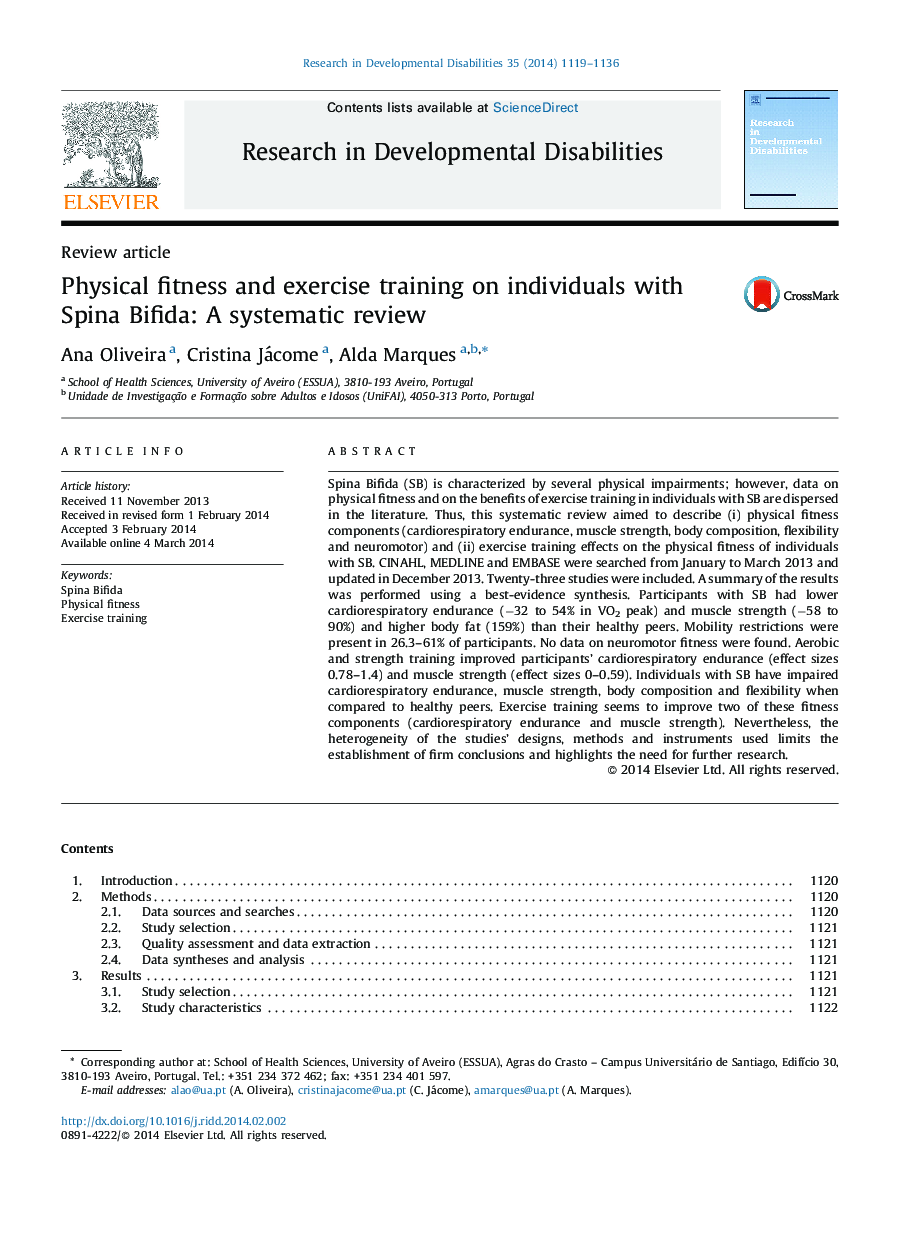| Article ID | Journal | Published Year | Pages | File Type |
|---|---|---|---|---|
| 10317406 | Research in Developmental Disabilities | 2014 | 18 Pages |
Abstract
Spina Bifida (SB) is characterized by several physical impairments; however, data on physical fitness and on the benefits of exercise training in individuals with SB are dispersed in the literature. Thus, this systematic review aimed to describe (i) physical fitness components (cardiorespiratory endurance, muscle strength, body composition, flexibility and neuromotor) and (ii) exercise training effects on the physical fitness of individuals with SB. CINAHL, MEDLINE and EMBASE were searched from January to March 2013 and updated in December 2013. Twenty-three studies were included. A summary of the results was performed using a best-evidence synthesis. Participants with SB had lower cardiorespiratory endurance (â32 to 54% in VO2 peak) and muscle strength (â58 to 90%) and higher body fat (159%) than their healthy peers. Mobility restrictions were present in 26.3-61% of participants. No data on neuromotor fitness were found. Aerobic and strength training improved participants' cardiorespiratory endurance (effect sizes 0.78-1.4) and muscle strength (effect sizes 0-0.59). Individuals with SB have impaired cardiorespiratory endurance, muscle strength, body composition and flexibility when compared to healthy peers. Exercise training seems to improve two of these fitness components (cardiorespiratory endurance and muscle strength). Nevertheless, the heterogeneity of the studies' designs, methods and instruments used limits the establishment of firm conclusions and highlights the need for further research.
Related Topics
Life Sciences
Neuroscience
Behavioral Neuroscience
Authors
Ana Oliveira, Cristina Jácome, Alda Marques,
